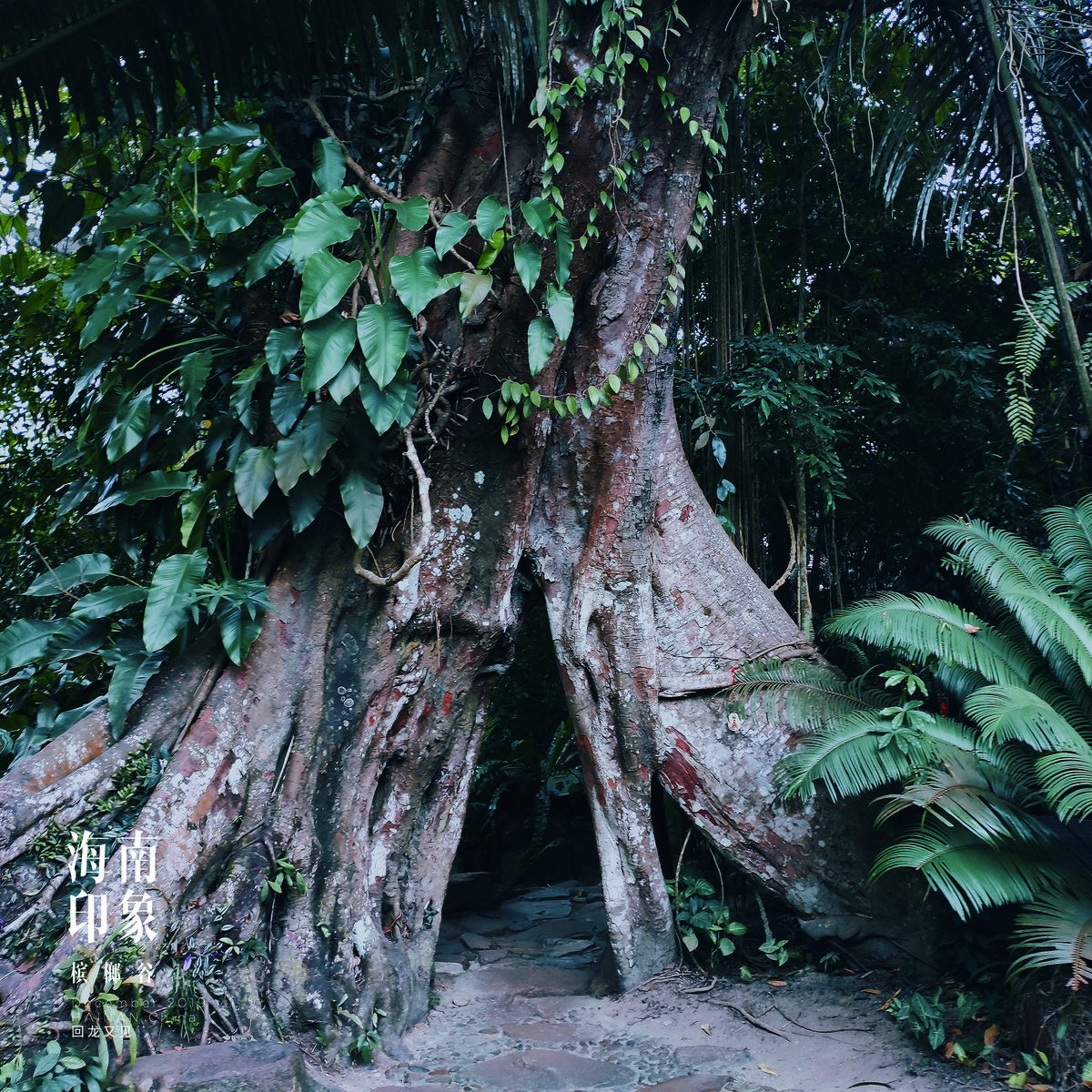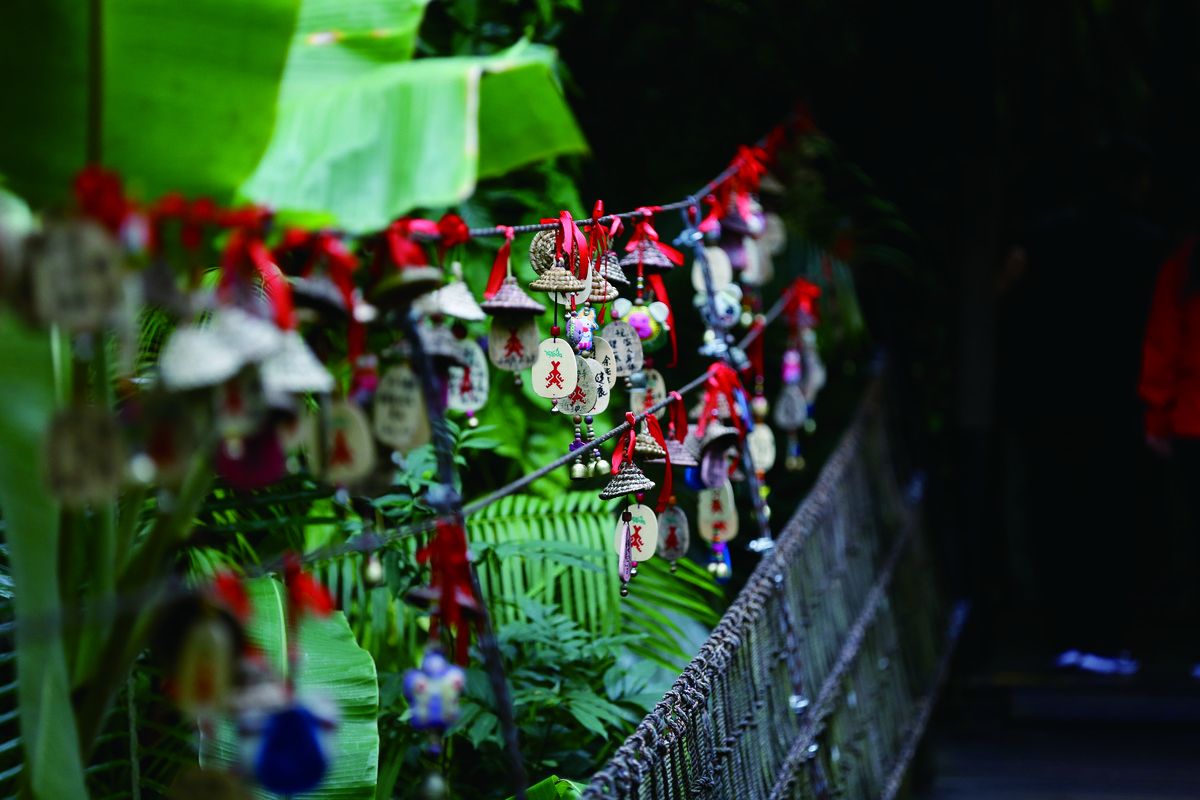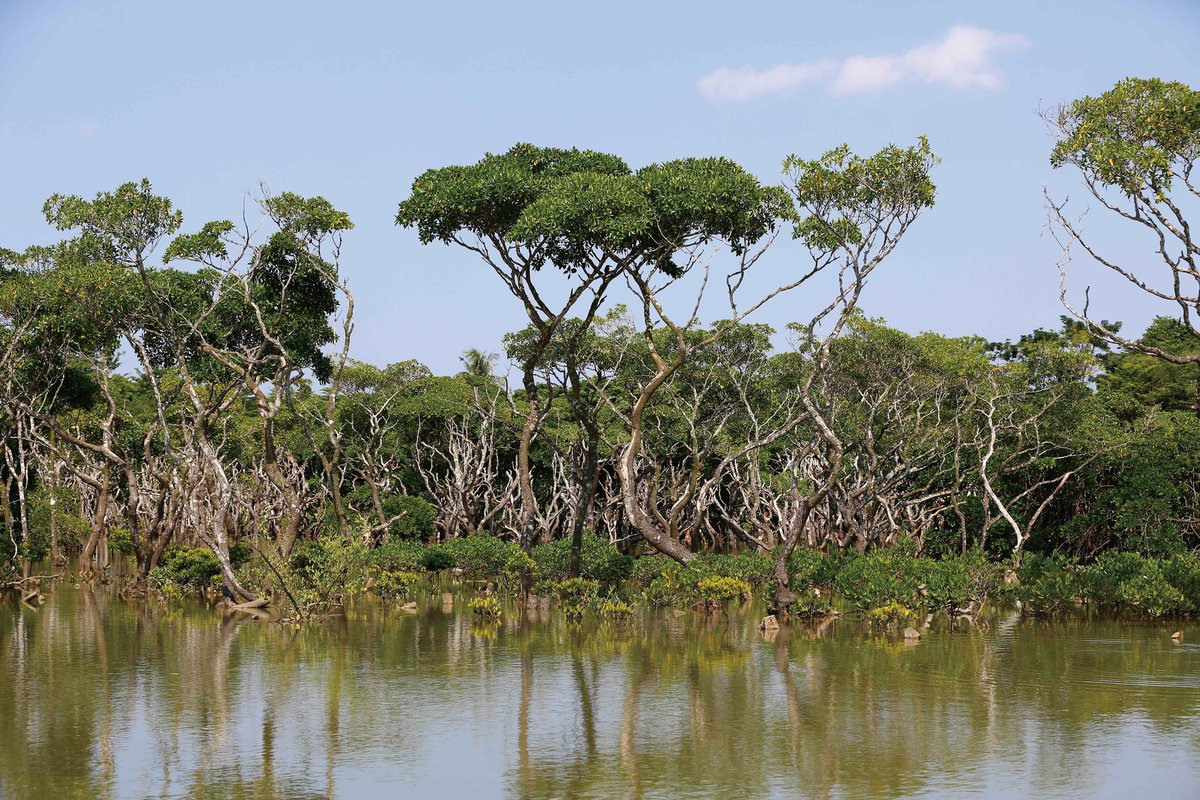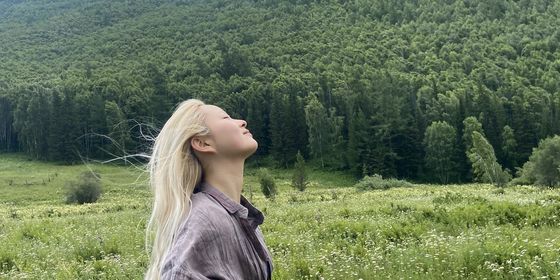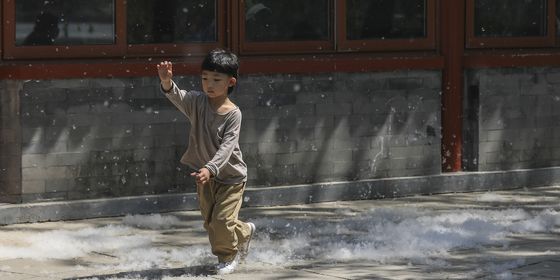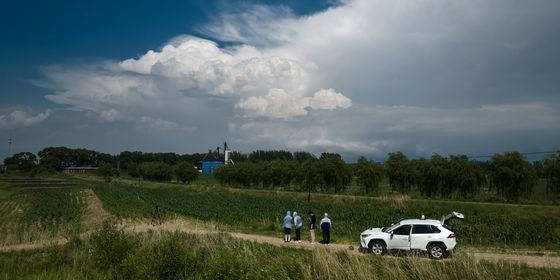An extract from TWOC’s guide to Hainan explores the island’s astounding natural beauty, from lush rainforests to soaring mountains
Once you’ve slurped enough coconuts on the sand and soaked up the sun, remember that Hainan is home to China’s largest tropical rainforest. Retreat from the touristic throng to Hainan’s less-traversed inland of verdant valleys and misted peaks, where you can join the serene company of thousand-year-old banyans and chirping songbirds.
The island is a veritable ecological haven. Over half of the island’s land mass is forested and home to 4,600 kinds of plants—some fossilized ferns harken to the age of the dinosaurs. Many of Hainan’s 570 animal species are exclusive to the island, including the Hainan gibbon, Hainan black bear, and Hainan giant flying squirrel.
In contrast to some areas on China’s rapidly industrializing mainland, Hainan’s forests are actually growing. In the 1990s, the province issued a complete ban on rainforest logging and instituted island-wide reforestation efforts. According to the Hainan Forestry Bureau, the tropical rainforest has grown by 200,000 hectares in the last 20 years. This is thanks in large part to anti-poverty campaigns that reduce the need for slash-and-burn subsistence agriculture. Locals have been recruited as forest rangers for enhanced monitoring and protection from illegal logging, and farmers have been redirected to plant cash crops like passion fruit and okra.
Smogged-up tourists from across China flock to Hainan for its reputation as a “natural oxygen bar,” where the vegetation density creates a concentration of negative ions popularly known as “fresh air.” Hainan’s air pollution is practically non-existent, with a negligibly low amount of harmful PM 2.5 particles.
So where to go to best enjoy the island’s “green lungs?” That depends largely on the time of the year, the extent of your patience for winding dirt roads, and how much you’re prepared to sweat. While whitewater rafting and waterfall climbing are preferred activities during the wetter months, the rainy season can render muddy paths slippery and invite the sock-climbing leeches out to play, so forest trekking is best enjoyed in the dry season from November to April.
The four major rainforests of Hainan cover the Wuzhishan (五指山), or the Wuzhi Mountains, Limu Mountains (黎母山), Diaoluo Mountains (吊罗山), and Bawang Mountains (霸王岭). Spread across central, southeastern, and southwestern Hainan, all are accessible within a few hours of Sanya and Haikou, offering varying landscapes and degrees of physical challenge for visitors.
The best option for getting around is by driving, if you are prepared for winding mountain roads. Otherwise, you can take a train to the nearest city and negotiate with a driver to take you the final stretch. Going inland, tourists are sparse and signs are less clear, so locating some scenic sites may be an adventure in itself. Accommodation is available in or near every park, though small inns operated by local families are much more common than large hotels. Some parks allow camping, so you may consider bringing your own tent.
For the less adventurous or the athletically challenged, there’s the Yanoda Rainforest Cultural Tourism Area (呀诺达雨林文化旅游区), which is easily accessible as a day trip from Sanya and best described as a rainforest theme park. Yanoda has the most developed infrastructure of any Hainan rainforest, as evidenced by its ticket price and popularity. Paved paths abound, and buses can shuttle you between the scenic spots inside the park, which makes it a navigable destination for the entire family in any season. Park workers will greet you with wide smiles and shouts of “Yanoda!”—a local Li greeting. On the park grounds, the crimson fruits of the Ormosia hosiei surrounding the Tong Pavilion (桐亭) symbolize missing loved ones, and a pair of entwined, thousand-year-old banyan trees represent eternal love.
For an additional cost, thrill-seekers in Yanoda can explore the glass walkway, zip line, and a waterfall climb. Stepping onto the 257-meter-long glass walkway suspended 200 meters in the air, visitors peer down over a valley and out to sea. The bridge is decorated with some floor panels designed to look shattered, with the sound effects of breaking glass playing on loop. You can zoom down the hill on a 680-meter zip line, with a photographer waiting at the end to capture your terrified face as you whoosh over the canopy and take in the bird’s-eye view. For the intrepid, the park operates tours trekking up Dream Valley waterfalls—which involves walking through the falls while water pounds relentlessly onto your shoulders.
Nestled in the central highlands are the rugged and sparsely populated Wuzhi Mountains. Translating to “Five Finger Mountains,” their five steep peaks are fabled to represent the hand of a former Li clan chief; others say they represent five Li gods. The “index finger,” at 1,867 meters, is the highest point of Hainan Island. Inscribed in Chinese calligraphy on a rock wall in the mountains is a poem by 15th century poet Qiu Jun (丘濬), who speaks of the mountains “washing their hands in the silver swath of night, picking stars from the sky” with “the moonrise nestled like a pearl in its palm.” Hundreds of years later, the scene remains dazzlingly unchanged.
To properly view the iconic stone appendages, you’ll need to go to the Wuzhi Mountains Tropical Rainforest Scenic Area (五指山热带雨林风景区), where panoramic outlooks built along a paved road offer the most photogenic points for capturing the unique outline of the mountain range. Boardwalks along the Shuiman River (水满河) allow for a more leisurely stroll.
For determined mountaineers, the Wuzhi Mountains National Nature Reserve (五指山国家级自然保护区) offers perhaps the most challenging hike on the entire island. However, citing the lack of safety infrastructure, park administration has been known to turn some visitors away in recent years. The nature reserve includes a wooden boardwalk in the Changhua River (昌化江) valley, lined with 200-million-year-old fossilized ferns that make you feel like you’re wandering in a Jurassic world. The park is dotted with warning signs to stay on the trail, as snakes also reside in Hainan’s rainforests.
The wooden stairs end abruptly at 1,250 meters, and the final 600 meters are a steep and arduous scramble. Climbers must navigate knotted tree roots as well as a series of near-vertical metal ladders hewn into the rock. One outcropping hosts a small red shrine, where one may want to mutter a quick prayer for safety. Hikers who make it to the top are rewarded by absolute stillness at the peak and its breathtakingly sheer cliff. Due to chilling winds, hikers typically tarry only to pose for their picture with the sign demarcating “the highest point in Hainan,” and descend carefully before sundown—bragging rights intact.
When the wet season is in full swing, the Wuzhi Mountains Grand Canyon (五指山大峡谷) opens up for whitewater rafting. The nine-kilometer rafting course is split into two routes—one turbulent, and the other more peaceful—where everyone can enjoy a ride on the river. You will get wet! Slippers and flip-flops are prohibited; you can wear or rent strapped sandals or water shoes. There is a shower available, so bring your own towel and a change of clothes.
For families with kids, or those looking to spend ample time meandering on foot in pursuit of hidden gems, the Jianfeng Mountains National Forest Park (尖峰岭国家森林公园) has the island’s most expansive offering of dirt trails, spanning over 100 kilometers throughout the park. The main peak, at 1,412 meters, can be summited by mostly stone stairs, but it’s off the paved road where things get fun. Chosen as one of the top 10 “most magnificent forests in China” by Chinese National Geography magazine in 2005, the valley is teeming with lakes, waterfalls, and streams filled with clear water and small fish. For avid campers with their own tents, the park also has a basic campsite.
A highly coveted sight is sunrise over Tianchi (天池, Heavenly Lake), when fingers of mist linger over a mirror-like reflection of emerald peaks rising from clouds of vapor. The Mingfenggu (鸣凤谷, Singing Phoenix Valley) is known for its bountiful birds, including peacocks, hawks, and egrets. In August, photographers, researchers, and tourists flock to Jianfeng Mountains for the butterflies, which fill the valley with colorful bursts of fluttering green, blue, and white.
For animal lovers, western Hainan’s Bawang Mountains National Nature Reserve (霸王岭国家级自然保护区) may provide a peek at the endangered Hainan gibbons hanging from the treetops of their only remaining habitat, or perhaps a shadowy glimpse of the elusive clouded leopard. Estimated to hold 250 species per square hectare, the biodiverse reserve is bursting with rare birds and butterflies along paths lined with caves, ridges, waterfalls, and twisting vines climbing up mossy rocks.
Geography aficionados may prefer the sprawling Diaoluo Mountains National Forest Park (吊罗山国家森林公园), a range spanning five counties in southeastern Hainan (Lingshui, Baoting, Qiongzhong, Wuzhishan, and Wanning) known for its abundance of landscapes—lakes, streams, and over 100 waterfalls. The Fengguoshan Waterfall Cluster (枫果山瀑布群), long considered Hainan’s grandest at 60 meters wide, and flaunting a 150-meter drop, has been closed to the public for the past few years, but there are plenty others to choose from, such as the 70-meter wide Tuonanri Falls (托南日瀑布).
Rimmed by mountains on all four sides, Diaoluo’s Xiaomei Lake (小妹湖, Little Sister Lake) extends toward layers of blue ridges that sometimes disappear altogether into the mist. Visitors can join locals in lighting incense at the Divine Tree (神树), a pine said to be 1,500 years old, revered and regarded as sacred by area residents. In the spring, the mountain is abloom with silk cotton, azalea, magnolia, cardamom, and phoenix flowers. Camping is allowed in the park, so stay awhile and take it all in.
The Qixian (Seven Fairies) Mountains Hot Springs National Forest Park (七仙岭温泉国家森林公园) is not considered one of the island’s major rainforests, but is a growing crowd favorite. According to the legends of the Li people, those who lived in the area enjoyed good health thanks to the abundance of natural hot springs. When the mother of heaven heard of this, she sent seven fairies to check on the springs to see if they were as nice as the ones in heaven. The seven fairies were soaking in the springs, when the god of sea winds, also covetous of the great location, sent battering rains over Li villages in the valley. The seven fairies were not to be messed with—they fought off the god of sea winds and became the area’s guardians, still standing sentinel today.
The 2.3-kilometer hike up to Qixian Mountains’ 1,126-meter tall peak is paved with 3,770 stone stairs; though the last hundred or so meters are a more vertical climb that may involve ladders and ropes. A long day of hiking is, of course, best ended with a nice soak in the hot springs. The water, reaching up to 95 degrees Celsius, can boil an egg in 10 minutes.
The central highland’s Limu Mountains are the “mother mountains” of the Li people, who have long lived in Hainan’s highland interior, and many of whom still collect traditional medicinal plants in the area. With the highest point reaching 1,412 meters, their slopes form the source of three of Hainan’s major rivers: the Nandu (南渡江), Wanquan (万泉河), and Changhua. Some paths around the mountain are clearly marked; others require hiring a local guide to navigate, as there are many forks in the road and it is easy to lose your way.
Whether its spring blossoms or summer butterflies, wet season rafting or dry season climbing, Hainan provides a stunning landscape for every part of the year. Shrouded in tales of vengeful gods and protector spirits, bursting with thousand-meter waterfalls and millennia-old fossils, Edenic forests beckon the daring to battle their way through thick jungles and rocky streams. Those who persevere may witness a miraculous sight when the mist clears and the emerald hills are on full display.
Crimson Woods
Thirty minutes by car east of downtown Haikou lies the Dongzhai Harbor National Nature Reserve (东寨港国家级自然保护区), home to the largest mangrove forest in China. The harbor was formed after a devastating earthquake in 1605, which sunk the land and submerged 72 villages under the sea. Following the tragedy, salt-resistant trees and other coastal vegetations began to flourish in the area, forming a diverse ecosystem.
Containing high level of tannins, mangroves are called hongshulin (红树林, “red forest”) in Chinese, because their branches appear red due to oxidation when broken. The first national nature reserve of its kind, Dongzhai’s 3,300-hectare site is home to various species of aquatic life and migratory birds. Visitors can walk through parts of the reserve on plank roads, or take a peaceful boat tour into the crimson woods.
Excerpt taken from Hainan: Jade Cliffs to Ocean Paradise, TWOC’s new guide to China’s southernmost province. Get your copy today from our WeChat store!







